Here’s what No One tells you about Comprehensive Utilization Of Aluminum Dross
Here’s what No One tells you about Comprehensive Utilization Of Aluminum Dross
China’s electrolytic aluminum industry is developing rapidly, and its output level has been leading the world for many years.
In 2019, the output of China electrolytic aluminum reached 35.04 million tons.
The annual aluminum dross generated by electrolytic aluminum, aluminum processing, and secondary aluminum was more than 4 million tons, and the historical accumulation was more than 10 million tons.
According to different production processes, the aluminum content in aluminum dross will also vary according to the source, usually from 15 to 70%.
According to statistics, the amount of aluminum dross produced generally accounts for about 7%-12% of the recycled aluminum output, of which metallic aluminum accounts for 30-40%, which is quite considerable.
In addition to aluminum, aluminum dross also contains a part of alumina, which is also valuable.
Aluminium dross is a mixture of metallic aluminium and non-metal part mostly aluminium oxide, and aluminium dross is a valuable by-product of any aluminum smelter or aluminium foundry, which still contains 10%-30% aluminum and 20%-40% alumina.
Unfortunately, many factories do not realize the value of aluminum dross, and abandon it casually, which not only pollutes the ecological environment, but also loses the economic benefits of the company.
Aluminum dross recycling is a wise choice for aluminum enterprises under the influence of energy-saving and emission reduction.
The amount of aluminum dross generated is closely related to the composition of scrap aluminum, melting and casting technology, agent composition, and temperature in the melting furnace.
Generally speaking, the higher the oxidation degree of scrap aluminum, the larger the surface area of the scrap aluminum material, and the more inclusions, the greater the amount of aluminum dross will be.
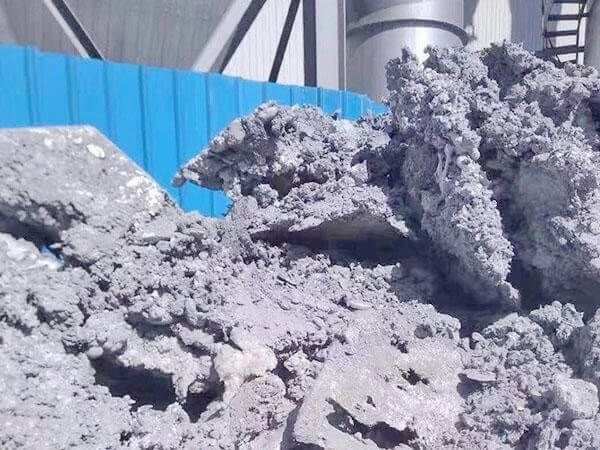
1. Sources and types of aluminum dross
Aluminum dross is generated in all the processes of molten aluminum, mainly including primary aluminum production (electrolytic aluminum), aluminum alloy production, scrap aluminum recycling and aluminum dross treatment process.
Generally, according to the different metal aluminum content in aluminum dross, it can be divided into primary aluminum dross and secondary aluminum dross.
The aluminum dross skimming from the smelting furnace is called primary aluminum dross, which is gray-white in appearance, mainly composed of a mixture of metallic aluminum and aluminum oxide, and the aluminum content can reach 15%~ 70%, also known as “white aluminum dross”; secondary aluminum dross is the waste after the primary aluminum dross is extracted from metal aluminum.
The main component is aluminum oxide, aluminum nitride, metal aluminum, salts and other components.
It is consolidated into lumps, also called “salt cake”.
|
Composition |
Aluminum |
Alumina |
Aluminum Nitride |
Aluminum Chloride |
Aluminum Fluoride |
Silicon Oxide |
Other |
|
Primary |
20~60 |
25~30 |
9~15 |
1.2~3 |
0.6~2.5 |
3~8 |
4.5~12 |
|
Secondary |
2~5 |
40~50 |
15~25 |
2~5 |
1~4 |
5~12 |
8~20 |
2. Aluminum dross properties
The composition of aluminum dross has obvious differences due to the different production procedures and processes.
The main part is alumina, metallic aluminum, magnesia-aluminum spinel, periclase, quartz, aluminum nitride, aluminum carbide and salt solvents, etc.
The bulk density of aluminum dross is 0.828~1.118g/cm3, the apparent density is 2.396~2.528 g/cm3, and the pH of the leaching solution is 9.03~10.14.
3. The impact of aluminum dross on the environment
The level of aluminum dross treatment and resource utilization is relatively backward, and most companies adopt direct landfill or stacking methods.
This extensive treatment method will cause the following three hazards to the environment.
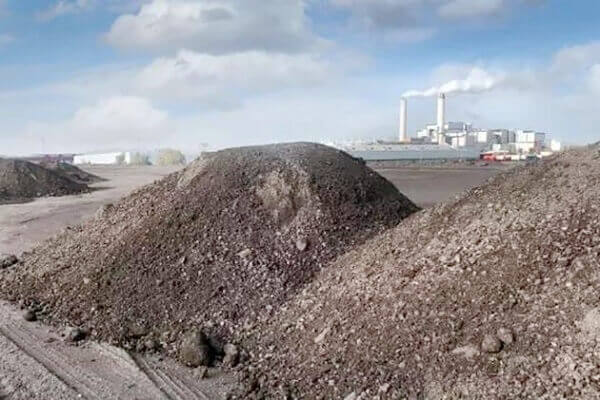
What are the harmful elements in aluminum dross?
Nitrogen (N): mainly exists in the form of AlN, ammonia gas will be produced when it meets water;
(AlN+H2O=Al2O3+NH3↑)
Fluorine (F-): mainly exists as fluoride, and releases fluoride ions when it meets water;
Na3AlF6, Na2SiF6, AlF3, NaF, MgF2
Chlorine (Cl): mainly exists as chloride salt, which is harmful to equipment corrosion and products;
Zinc (Zn) Lead (Pb) Arsenic (As) Mercury (Hg) Copper (Cu) Chromium (Cr)
3.1. Groundwater pollution
Aluminum dross is affected by rain or a humid environment during the storage process, and the toxic and harmful substances such as fluoride, cyanide, heavy metals, soluble salt, etc. will migrate and transform, causing underground pollution.
In addition, the aluminum nitride of aluminum dross in the damp environment will release ammonia gas, causing the pH of the groundwater to rise; some calcium and magnesium ions may also cause the total hardness of the groundwater to exceed the standard.
3.2 Air pollution
The aluminum nitride, metallic aluminum, and a small amount of aluminum carbide, aluminum sulfide, aluminum phosphide, etc. contained in aluminum dross will release a large amount of ammonia gas and produce a certain amount of hydrogen, methane, hydrogen sulfide, phosphine, etc.
Most of these gases are toxic and harmful, and some are foul-smelling, flammable and explosive.
Directly discharged into the air not only pollutes the atmosphere but also brings safety hazards.
In addition, the aluminum ash of the storage yard is exposed to the wind and sun.
The surface adhesion of aluminum dust becomes poor, which can easily cause dust pollution.
3.3 Soil pollution
The accumulation of aluminum dross not only occupies a large amount of arable land, but also its salt will slowly accumulate in the soil, causing salinization, and disturbing the normal physiological activities of the roots of the surrounding plants.
In addition, the selenium, arsenic, barium, barrier, chromium, lead, etc. in the aluminum dross may be possible Lead to excessive soil heavy metals.
4. Valuable element recovery technology of aluminium dross
4.1 Recover Aluminium from aluminium dross
Aluminum dross, especially the primary aluminum dross contains too much metal aluminum.
Many technologies have been developed at home and abroad to recover the metal aluminum from aluminum dross.
Mainly divided into two types: heat treatment and cold treatment.
Common aluminum dross heat recovery technologies include:
DPM(dross processing machine) recovery method, tilting rotary furnace treatment method, Squeeze recovery method and MRM(metal recycling machine)method, etc.
This type of technology is mainly applied to primary aluminum dross, which can make full use of the physical residual heat of aluminum dross, and extract aluminium metal from aluminium dross on site.
Common aluminum dross cold treatment technologies include Gravity concentration, electrical concentration, mechanical crushing and screening method, etc. T
his type of technology is mainly used for secondary aluminum dross recovery, with simple operation less pollution features.
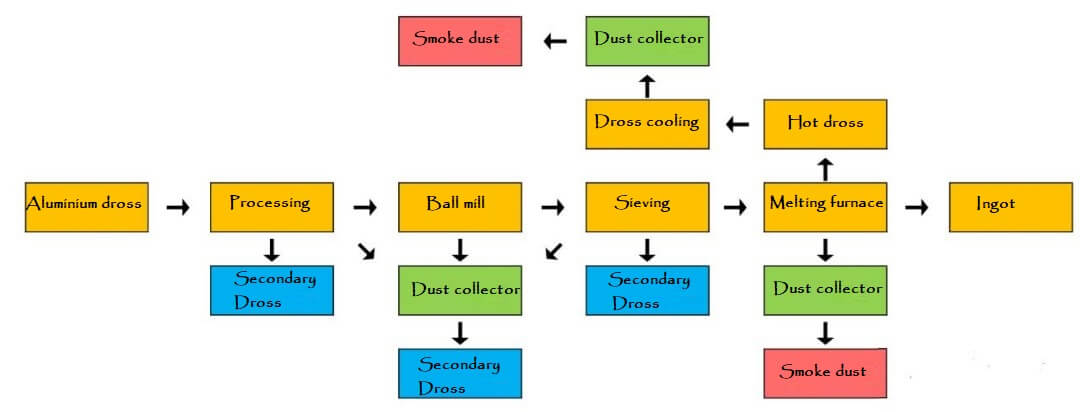
Aluminium dross hot and cold recovery methods will be discussed in item 5.
4.2 Recover alumina from aluminium dross
The main methods for recovering alumina from aluminum dross include acid method, alkali smelting method, alkaline leaching method, etc.
DAS uses sulfuric acid leaching method to recover η-Al2O3 from aluminum dross, first through water washing the soluble salt in the aluminum dross is removed, and then leached with sulfuric acid to obtain aluminum sulfate solution, which is reacted with ammonia water, and finally, η-Al2O3 is prepared by calcination.
The recovery rate of aluminum in this process reaches 84%.
MOSTAFA uses a hydrochloric acid leaching method to prepare nano-grade high-purity alumina γ-Al2O3, leaches for 2h at a hydrochloric acid concentration of 5mol/L and a reaction temperature of 85 ℃, and prepares alumina with a particle size of 15.90nm, and the purity of the product is above 98%; the study also found that aluminum dissolution of dross in hydrochloric acid is controlled by layer diffusion, and the reaction activation energy is 10.49kJ/mol.
Fei Li uses a low-temperature alkaline smelting-leaching-seed decomposition process to prepare α-Al2O3.
Yangmin Zhou smelted the purified aluminum dross with caustic soda to prepare sodium aluminate, and then prepared sandy alumina through water immersion, separation, and calcination.
Gang Xie adopts pressurized alkaline leaching and microwave-assisted activation to realize electrolytic aluminum Recovery of alumina from aluminium dross.
4.3 Recover salt from aluminium dross
The salt in the aluminum dross is mainly derived from the flux added in the process of recovering aluminum by the heat treatment method.
Wei Cui uses ultrasonic enhanced leaching to recover the chloride salt in the aluminum dross, which increases the leaching rate and shortens the leaching time compared with conventional leaching.
BRUCKARD studied the influence of different aluminum dross particle sizes, leaching time, leaching temperature, and type of leaching solution on the soluble salt was studied, and it was shown that more than 90% of the chloride can be eluted by water within 1 hour Under the wet milling-alkali leaching process conditions, the chlorine removal rate is as high as 99.6%.
The recovery of soluble salts in the aluminum dross is generally not carried out separately and is usually an additional process for the recycling of aluminum dross.
4.4 Recover gases from aluminium dross
Aluminum dross can produce hydrogen, ammonia, methane, hydrogen sulfide and other gases.
Each kilogram of aluminum dross can release 0.25~1.17L of gas. Although the amount of gas is small, and its economic effectiveness has been questioned, but in recent years, the experts and scholars at home and abroad began to pay attention to the research on the overall resource utilization of aluminum dross.
As a product of resource utilization, gas became a potential source of various gases.
MESHRAM and others studied the use of sodium hydroxide solution to recover aluminum dross. Hydrogen technology, the results show that fine-particle aluminum dross is easier to generate hydrogen because it has a larger surface area, although the content of metallic aluminum in fine-particle aluminum dross is lower than that of coarse particles.
DAVID research shows that the aluminum dross is crushed and ground to 45μm, and the aluminum oxide film covered the metal aluminum is destroyed, and sodium hydroxide and potassium hydroxide are used as catalysts.
At room temperature, the recovery rate of hydrogen can reach 100%.
BRUCKARD found that ammonia is easier to produce in alkaline solutions with pH>8, and it is mainly in the form of ammonia in solutions with pH<8.
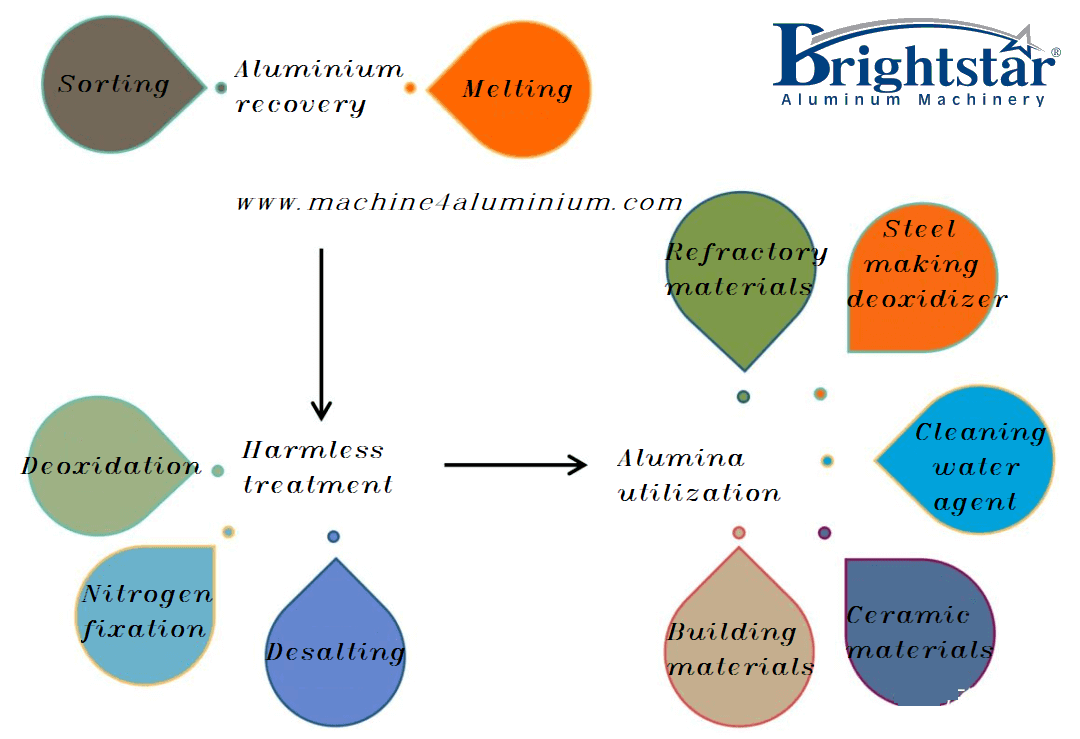
5. Comprehensive utilization of aluminum dross
Recover aluminium from aluminium dross
The main methods of recovering aluminum from aluminum dross are heat treatment recovery method and cold treatment recovery method, and the recovery rate of aluminum can reach more than 50%.
5.1 DPM(Dross Processing Machine)
The most effective method for extracting aluminum from hot dross, skimming aluminium dross from the furnaces, mechanical stirring with the machine rotor, making full use of residual heating for aluminum dross, no need any fuel and no need any chemical flux in operation.
Little machine, big performance.
The investment can be taken back within 1-3 months if the dross processing quantity is enough.
5.2 ALUREC Method
The ALUREC method is jointly developed by AGA AB Gas Technology Group, Hoogovens Aluminum, and MAN GHH.
The rotary melting furnace is quickly heated to a high temperature by oxygen-enriched natural gas, melting aluminum at the bottom of the rotary melting furnace, and slag floating on the molten aluminum.
This method has high efficiency, low energy consumption and good operating environment, but it has high production cost and large amount of smoke and dust in the dust collection system.
5.3 Tilting Rotary Furnace Treatment Method
The tilting rotary furnace process is to add a small amount of salt flux or no flux to the tilting rotary furnace to melt aluminum.
The aluminum dross and molten salt (NaCl, KCl, CaF mixture) are mixed in the rotary furnace, and heated at high temperature while rotating so that the metal aluminum melts and sinks to the bottom of the furnace to achieve the separation.
The method is simple to operate and easy to implement, but it requires fuel heating, equipment lining material loss, the equipment failure rate is high and a small production scale.
5.4 MRM (Metal Recycling machine) and modified MRM method
The process is to send the hot aluminum dross generated from the furnace into the dross machine with the stirring device, add the heating flux, and maintain a certain temperature, so that the metal aluminum is melted and separated from the bottom outlet.
The remaining aluminum dross can be crushed, sieving, and melted to recycle metal aluminum.
The improved MRM method is to introduce argon gas for stirring and aluminum recovery.
The aluminum burning loss rate of this method is less than 4%, and the recovery rate is more than 91%. It has the advantages of fast processing speed, low aluminum burning loss and high recovery rate.
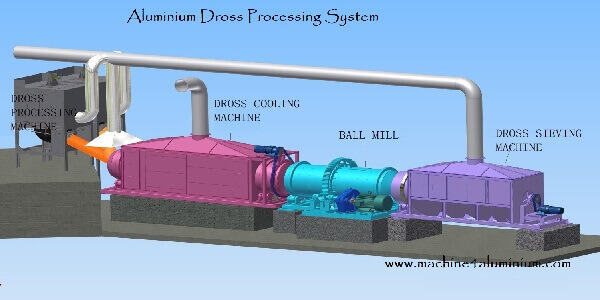
5.5 Plasma Instant Method
The plasma instant method uses a plasma nozzle that operates on an electric current to melt aluminum dross in a tilting furnace. Stir in carbon dioxide, carbon tetrahydrogen or hydrogen in the air in an appropriate amount.
When the material is rapidly heated to 950°C, and the metal aluminum sinks and is discharged at the bottom of the furnace.
The total recovery rate of aluminum is 90%. Because calcium oxide is added as a flux, a by-product calcium aluminate is produced.
This method has a high recovery rate of metal aluminum, does not use salt flux, but consumes gases such as CO 2, CH 4 or H 2, and the supply and auxiliary equipment is complicated, and there are problems in the production and sales of by-product calcium aluminate.
5.6 Squeezing Recovery Method
In this method, hot aluminum dross is added from the upper part of the machine, and the molten aluminum is squeezed by applying static pressure or dynamic pressure.
This method has the advantages of simple equipment, low maintenance cost, but the recovery rate is low and it is a big investment.
5.7 Gravity Concentration
The main equipment of gravity beneficiation treatment of aluminum dross is a table concentrator.
This method has been widely used in the sorting of precious metal ores such as tungsten, tin and gold.
The principle is to use the density of metal and gangue particles, it is separated in an environment where water is the main medium.
This method is more suitable for processing aluminum dross after heat treatment recovery method (which can be called secondary aluminum dross).
5.8 Electrical concentration
The principle of electrical separation is a beneficiation method that utilizes the different electrical properties of various materials.
The electric separation equipment has a rotating drum with good grounding. At the same time, there is a high-voltage DC electrode near the rotating drum. This electrode generates a electric field against the rotating drum.
There is a hopper at the top of the rotating drum.
Aluminium dross continues to fall on the surface of the drum and enter the corona field.
At this time, all the components in the aluminum dross are charged, and the electrical properties of aluminum are different from other substances.
The charge obtained by the aluminum particles is immediately transferred to the ground by the drum and lost.
After the charge, under the action of the centrifugal force and gravity of the drum, the aluminum particles fall, but the non-conductor has a charge, is adsorbed on the drum, is taken to the other end, and then passed through the brush, the falling point of the two is obviously different, so that, aluminum and non-aluminum substances in aluminum dross can be effectively separated.
5.9 Crushing and Screening method
After cooling, the heat-treated aluminum dross processed by aluminum dross machine will be ground and crushed by the ball mill.
During ball milling, aluminum metal and other components in the dross will be separated and reach different particle sizes that are suitable for recycling, through the impact, grinding and crushing of the ball mill medium.
Aluminum dross will be screened in different grades for recovery.
Aluminium dross machine, dross cooling and ball mill and sieving machine, one completed solution for the dross recycling.
6. Aluminum dross composition will vary from different sources
Aluminum dross is generated in all processes where aluminum is melted, such as aluminum electrolysis and aluminum (including secondary aluminum) processing.
Its source can be divided into aluminum dross produced in the aluminum electrolytic smelting process, aluminum dross generated in the aluminum melting and casting process, and aluminum dross generated in the secondary aluminum processing process.
Electrolytic aluminium dross
w(Al)25.58, w(Al2O3)31.55, w(SiO2)5.56, w(Na2O)2~3, w(MgO)2.0~3.0, w(CaO)<2.00, w(FeO)+ w(MnO)<1.0
Cast aluminum dross
w(Al)10, w(Al2O3)50~60, w(SiO2)3.0~5.0, w(Na2O)1.0~1.5 w(MgO)2.0~3.0, w(CaO)1. 5~3.0, w(FeO)+ w (MnO)<1.0
7. Production of aluminum compounds from aluminum dross
The secondary aluminum dross stored and urgently needed to be processed by the enterprise is the secondary aluminum dross.
The main component of the aluminum dross is aluminum oxide.
At present, many comprehensive utilization methods of aluminum dross have been developed at home and abroad for the recovery of aluminum dross.
7.1 Production of high polymer cryolite from aluminum dross
Nanyang Dongfang Chemical Research uses aluminum dross as the source of aluminum, Use acid solution or alkali solution process to separate aluminum from aluminum dross and prepare sodium aluminate, and then use sodium aluminate and sodium fluorosilicate as raw materials to produce high polymer cryolite under optimized process conditions the aluminum dissolution rate reaches 98.6%, and the yield rate reaches 95.3%.
The cryolite produced meets the GB/T 4291-2017 standard.
The production process effectively controls and comprehensively utilizes wastewater and waste gas, and has no impact on the environment.
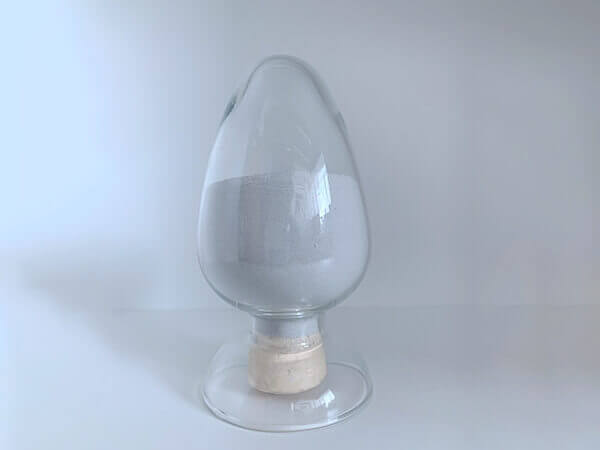
7.2 Production of aluminum fluoride from aluminum dross
Some Chinese Engineers studied the process of preparing aluminum fluoride from electrolytic aluminum dross and made an industrialization attempt.
Using fluorosilicic acid, a by-product of the phosphorus chemical industry, as the fluorine source, the fluorosilicic acid is reacted with ammonia, and the fluorinating agent solution and precipitated Silica is obtained after separation.
After the fluorinating agent solution is concentrated, crystallized and vaporized, it is sent to an aluminum fluoride reactor and reacted with aluminum hydroxide to obtain anhydrous aluminum fluoride.
The aluminum hydroxide used is made of electrolytic aluminum dross.
The mother liquor produced in the production of aluminum hydroxide is an ammonium sulfate solution, which is sent to the mother liquor for comprehensive utilization for the recovery of ammonia, and the obtained ammonia is recycled for use.
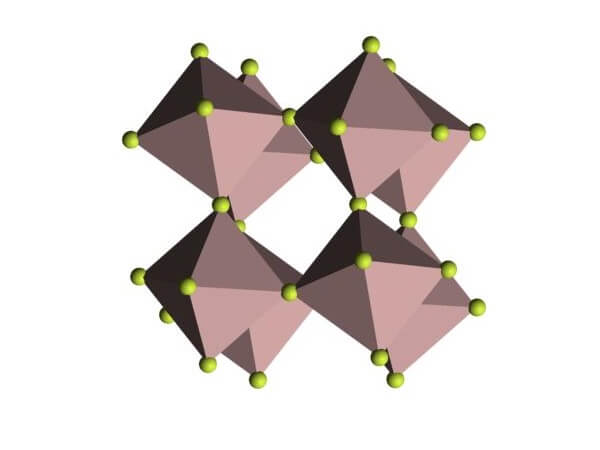
Under optimized process conditions, the aluminum leaching rate is ≥95%, and the yield rate is ≥88%.
The products obtained meet the GB/T 4292-2017 standard, and have the advantages of low production cost, excellent product quality, and pollution-free production process.
7.3 Synthetic polyaluminum chloride
Some Chinese Engineers proposed that aluminum dross and hydrochloric acid were used as raw materials to prepare liquid polyaluminum chloride by acid dissolution.
The aluminum dross is pretreated by washing with water to remove water-soluble salts, and the obtained aluminum dross content is 30%.
Add the hydrochloric acid solution to the reaction still and heat to a certain temperature, add aluminum dross and stir constantly, control the reaction temperature to 96 ℃, the reaction time is 6 to 12 h, after the reaction is completed, add water to dilute, and the pH is controlled at 3.5 to 4. 5.
Precipitation for 15-24h to obtain liquid polyaluminum chloride.
The process has the characteristics of fast reaction speed and simple process, but the hydrochloric acid corrodes the equipment and the subsequent waste liquid treatment cost is high.
7.4 Production of aluminum sulfate
Some Chinese Engineers have conducted research on the production of aluminum sulfate using aluminum dross as raw material.
Under the optimal process conditions, the aluminum recovery rate is over 93%, and the quality of aluminum sulfate fully reaches the first-level standard of HG2225-91.
7.5 Synthesis the alumina for ink
Some Chinese engineers used the preparation of liquid aluminum sulfate, the preparation of sodium metaaluminate, and the synthesis of alumina to oxidize the aluminum-containing waste sulfuric acid in the waste bath discharged from the aluminum profile anodization process and the secondary aluminum dross synthesis alumina for ink.
All indicators of alumina products for inks produced by this method meet national standards.
8 Other products made from aluminium dross
8.1 Ceramic simple brick production

Some Chinese engineers added appropriate amounts of clay, quartz and additives to the aluminum dross (to reduce the firing temperature), pressed and formed and fired to prepare high-performance ceramic simple bricks.
The aluminum dross content of ceramic brick is ≥60%, the porosity of the broken body is 30%-50%, the flexural strength>20MPa, and the compressive strength>60 MPa.
It is a ganged brick with excellent performance.
This method opens up a new way of recycling aluminum dross and reduces the raw material cost of ganged bricks.
8.2 Synthetic Sialon powder from aluminum dross and coal ash
Some Chinese engineers got Sialon powder using a carbothermal-aluminum-thermal composite reductive nitriding process, with aluminum dross, carbon black and coal ash as the main raw materials.
Through experimental research, it is concluded that when the ratio of silicon to aluminum in the raw material is 1.5, relatively pure Sialon powder can be got at 1450°C.
Sialon materials have superior chemical stability, mechanical properties, and thermal properties.
This method uses industrial hazardous waste residues, protects the environment, and reduces the synthesis cost of Sialon ceramics, but the cost is high and it is difficult to promote and apply it.
8.3 Sintered materials production
Using aluminum dross produced by secondary aluminum alloy manufacturers, some companies jointly developed a technology for producing sintered materials.
A material with high strength, internal porous, light and water-permeable is obtained.
It is widely used and can be used as agricultural materials, subsea purification materials and lightweight aggregates for construction.
The material is water-permeable, which shortens the construction time and meets the requirements of barrier-free.
8.4 Production of brown aluminium oxide
Some Chinese companies used pretreated aluminum dross as raw material, anthracite as a reducing agent, and iron filings as a precipitant to produce brown fused alumina.
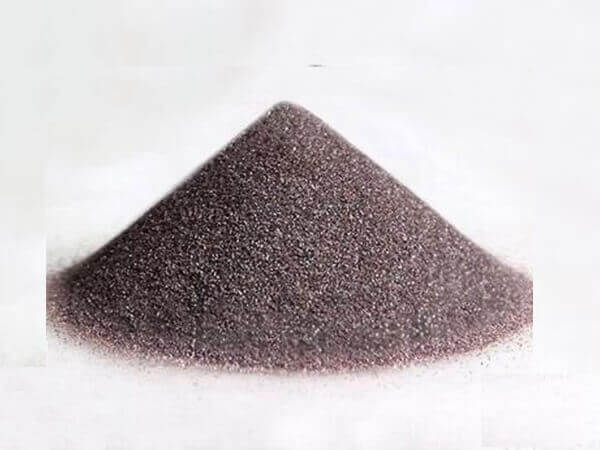
The product index of brown fused alumina produced by this process has reached the secondary product index (88% alumina), part of which the product meets the national standard of GB1478-81 (Al2O3 ≥92. 5%, TiO2 1. 5%~3.8%).
8.5 Production of adsorbent
Gupta VK et al. conducted a study on this. When the wastewater containing phenol was passed at 0.5 mL/min in a cylindrical adsorption device equipped with an adsorbent, the removal rate of phenol reached 98%, and the adsorbent effect was obvious.
Genc. Fuhrman H and others have also studied this, controlling the pH value, the active red mud adsorbent has a good effect on absorbing arsenate ions in the water, and the adsorption rate is 100%.
Using hazardous waste aluminum dross to produce adsorbent instead of activated carbon is a good choice, and the adsorption effect is good
8.6 Refining agent for steelmaking
PICKENS invented a process for preparing calcium aluminate from aluminum dross. First, the aluminum dross is crushed and ground, and the soluble and insoluble materials in the aluminum dross are separated by water leaching, and the salt is recovered from the soluble matter.
The main composition of the insoluble matter is alumina and a small amount of magnesium and silicon oxide, basically do not contain aluminum nitride and metallic aluminum.
Add a certain amount of calcium oxide to insoluble matter, and fired into calcium aluminate at 1 093-1193°C, which can be used to remove the harmful element sulfur in a high-quality steel.
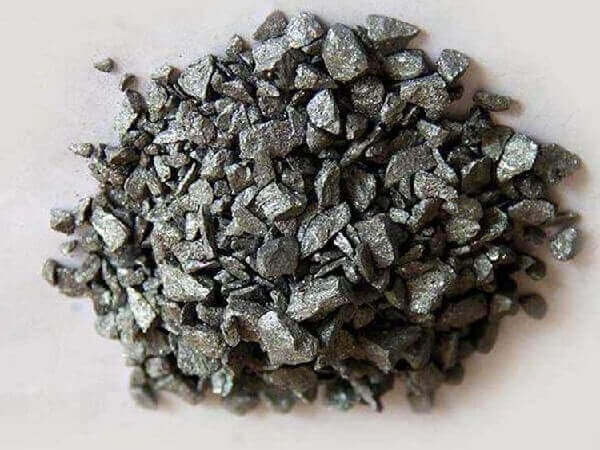
Wanchao Liu and others also reported on the process of preparing calcium aluminate refining agent from aluminum dross.
China is a big country in iron and steel, and the use of aluminum dross to make steel-making flux is expected to realize the large-scale application of aluminum dross.
8.7 Refractory materials production
Refractory materials are widely used in high temperature industries such as metallurgy, cement, ceramics, glass, petrochemicals, etc. Aluminum dross contains a large amount of alumina, making it a potential raw material for refractory production.
PARK uses aluminum dross calcined at 900°C to replace part of the castable fine aggregate (<0.074mm).
Generally, its compressive and flexural strength can meet the requirements, but when the content exceeds 30%, its performance decreases.

YOSHIMURA uses plasma heating technology to prepare refractory materials.
Aluminum dross does not require pretreatment and can directly replace about 5% of raw materials, but it is necessary to strictly control the moisture content in the production process to prevent cracks caused by gas generation at high temperatures.
Xiaona Li using aluminum dross, high-alumina bauxite and fused magnesia as raw materials, high-temperature fusion method is used to synthesize aluminum-rich magnesium-aluminum spinel, and it is verified that it is feasible as a refractory raw material.
Aluminum dross is a mixture composed of metallic aluminum, alumina, aluminum nitride, salt and other components.
After aluminum dross is defined as hazardous waste, traditional extensive treatment methods are no longer feasible.
With the implementation of the environmental protection tax, the factories urgently need economic, safe, and environmentally friendly aluminum dross treatment technology.
In view of the increasingly distinctive characteristics of the regional concentrated development of aluminum industry, in the future, a large-scale aluminum dross comprehensive treatment plant will be established to centrally treat the aluminum dross in the region to realize the transition from “inefficient and decentralized utilization” in the past to “efficient and large-scale utilization”.
It is the only way for the development of the industry
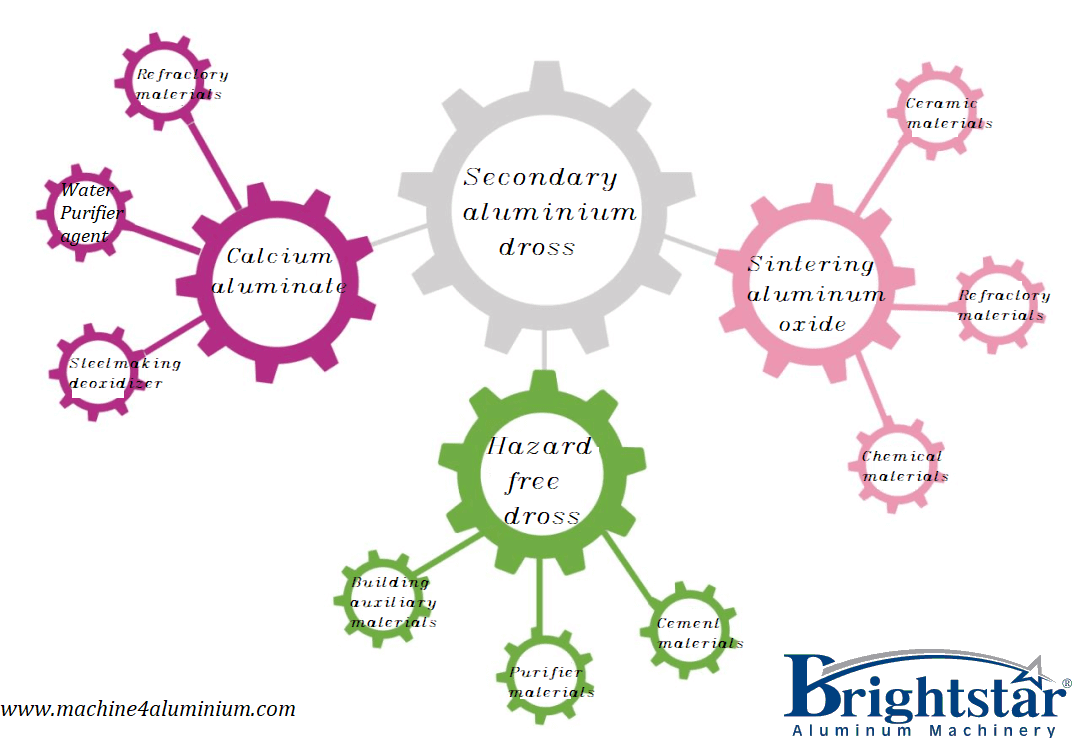
At this stage, the cost of aluminum dross treatment is relatively high, and some factories cannot afford it.
Therefore, the development of low-cost treatment and harmless technology or high-value-added resource technology will be a key strategy to solve the problem of aluminum dross recovery.
In addition, increasing the development of aluminum dross treatment engineering equipment, improving the industrialization scale and technical level of aluminum dross treatment, and promoting the green and healthy development of the aluminum industry are also difficulties that need to be overcome in the future for aluminum dross treatment.
How to process hazardous waste aluminum dross? By what method?
At present, there are two methods for treating hazardous aluminum dross:
Harmless treatment and resource utilization
The harmless treatment process of hazardous waste of aluminum dross: through acid leaching, alkali leaching, washing, etc., the impurities such as nitrogen compounds, fluorides, and salts in the secondary aluminum dross are removed to obtain harmless aluminum dross, and then Landfill safe.
Hazardous waste aluminum dross resource treatment process: After removing toxic substances, the secondary aluminum dross is made into different products through high temperature or cold processing, such as refining agents and water purification agents, or returned to the electrolytic cell.
Hazardous waste aluminum dross is generally divided into primary aluminum dross and secondary aluminum dross.
The metallic aluminum content is between 70%~80% and 5%~30% respectively.
Primary aluminum dross has the dangerous characteristic of reactivity.
It has high recycling value relatively;
Secondary aluminum dross may contain substances such as aluminum carbide, aluminum nitride, fluoride, etc.
It has two dangerous characteristics: reactivity and flammability.
If it is not treated harmlessly, it will cause serious pollution to the environment.
Basic principles of hazardous waste aluminum dross treatment:
1. Reduction: Source reduction → dross recovery
2. Harmlessness: remove reactivity and toxicity → catalytic hydrolysis
3. Resource utilization: recycling aluminum metal and making new products → ball mill screening, calcination…
Emergency treatment ideas for hazardous waste aluminum dross:
1. Primary aluminum dross recovers aluminum metal and then catalyzes hydrolysis or transport
2. Co-processing of secondary aluminum dross, baghouse dust collector, rotary furnace and calcine furnace.
3. Centralized storage, unified transportation, safe and rapid disposal.
Precautions for handling hazardous waste aluminum dross:
1. No secondary pollution;
2. Do not exceed emission standards;
3. Identification of hazardous waste from residual solid waste.
Current status and treatment methods of metal aluminum recovery technology from hazardous waste aluminum dross:
1 Heat treatment method:
It can make full use of the physical latent heat of aluminum dross.
However, when aluminum dross is repeatedly stirred under high-temperature conditions, it will inevitably come into contact with air, causing a large amount of metal aluminum to be oxidized, reducing the recovery rate of aluminum.
2. Cold treatment method:
It is used to recover metallic aluminum from secondary aluminum dross.
It has the advantages of simple operation and low pollution.
The basic process flow of recycling metal aluminum/particles from aluminum dross:
1. Broken
The recovered aluminum dross and dross block are transported to the ball mill via a closed conveyor through the feed bin for crushing.
2. Ball mill
The aluminum dross that has undergone the crushing step is further ball milled.
3. Screening
Send to vibrating screen for screening.
4. Rotary furnace or melting furnace metling
The screened materials are divided into aluminum particles and powder (secondary aluminum dross).
The aluminum metal/particles are sold to aluminum melting companies or aluminum ingots and ingot manufacturers for remelting.
Some companies use their own melting furnace or rotary furnace makes aluminum ingots or billets.
5. Calcine furnace
The remaining powder (mainly containing alumina)6 is sent to a calcine furnace for high-temperature heating to get the calcium aluminate.
6. Baghouse dust collector
The whole process will be equipped with baghouse dust collector for environmental protection.
The emission standard can be 30mg/m3.
The hazardous waste aluminum dross treatment process should ensure that the whole recycling process is safe and dust-free and does not cause secondary pollution to the environment.
Aluminum dross harmless treatment
Aluminum dross calcination equipment is one of the indispensable equipment in the aluminum dross treatment process.
Its function is to decompose and oxidize aluminum, silicon, iron and other elements in aluminum dross at high temperature to generate high-value-added alumina and silicate. and iron oxides and other products.
The main types of aluminum dross calcination equipment include rotary furnace, fluidized beds and vertical furnaces.
The rotary furnace is a common aluminum dross calcining equipment.
Its working principle is to charge aluminum dross to the rotary furnace and oxidize and decompose the aluminum, silicon, iron and other elements in it through high-temperature combustion.
The rotary furnace has the advantages of simple structure, convenient operation, and large processing capacity, so it has been widely used in the field of aluminum dross treatment.
The fluidized bed is a new type of aluminum dross calcination equipment.
Its working principle is to charge aluminum dross to the fluidized bed, and through the action of high-temperature airflow, the aluminum dross is suspended in the bed for high-temperature oxidation.
The fluidized bed has the advantages of uniform temperature, high treatment efficiency, and easy flue gas treatment, so it has great development potential in the field of aluminum dross treatment.
However, the fluidized bed also has some disadvantages, such as high investment cost and serious wear and tear.
The vertical furnace is a special aluminum dross calcining equipment.
Its working principle is to charge aluminum dross to the vertical furnace, the aluminum element in the aluminum dross is restored to metallic aluminum through high-temperature reduction.
The vertical furnace has the advantages of low energy consumption, high metal recovery rate, and environmental protection, so it has also been widely used in the field of aluminum dross treatment.
However, vertical furnaces also have some disadvantages, such as high equipment costs and difficulty in operation.
When selecting aluminum dross calcination equipment, comprehensive considerations need to be made based on the actual situation, including processing capacity, energy consumption, environmental protection requirements, equipment cost and other factors.
At the same time, we also need to pay attention to issues such as equipment maintenance and safe operation.
In addition, manufacturers of aluminum dross calcination equipment also need to continuously improve the performance and reliability of the equipment, and strengthen the environmental protection and safety performance of the equipment to meet increasingly higher environmental protection requirements and safety production requirements.
At the same time, it is also necessary to strengthen equipment research and development and innovation to promote the sustainable development of the aluminum dross treatment industry.
In summary, aluminum dross calcination equipment is one of the important equipment in the aluminum dross treatment process, and its selection and use need to consider many factors.
Only by fully understanding the performance, advantages and disadvantages of various equipment, and selecting and configuring them according to the actual situation, can we achieve the best processing results and economic benefits.
At the same time, it is also necessary to strengthen equipment research and development and innovation to promote the sustainable development of the aluminum dross treatment industry.

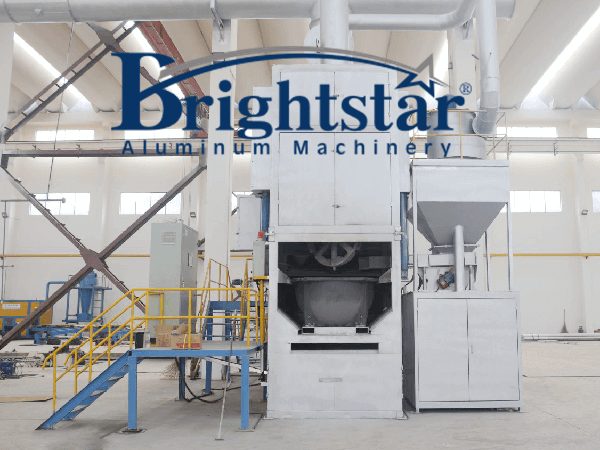
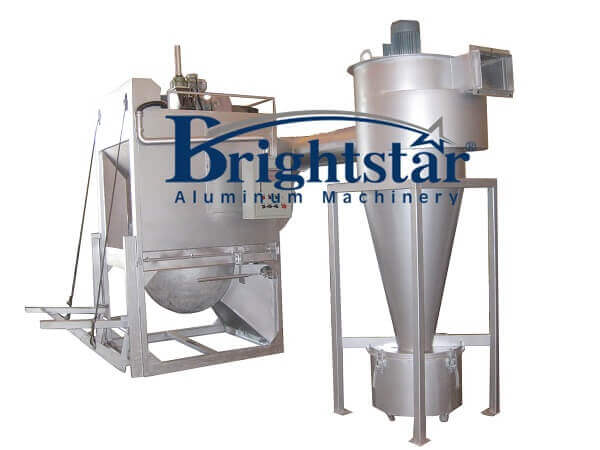
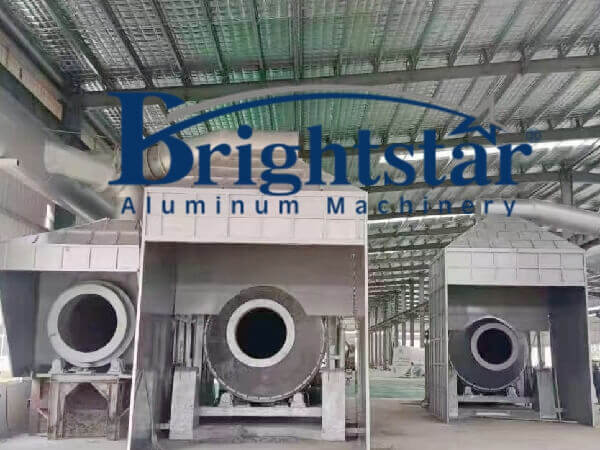
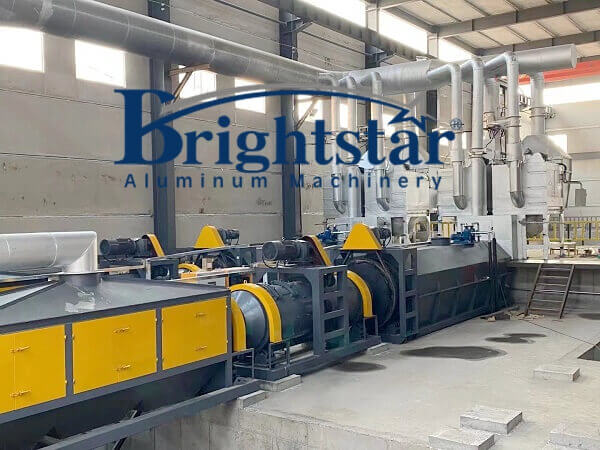
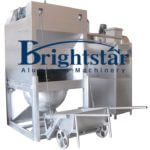
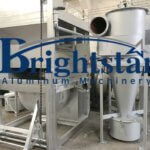
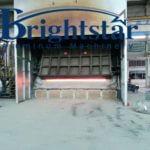
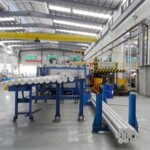
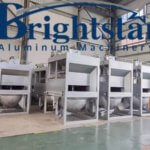




Comment * Some countries had identified aluminium dross and aluminium slag as hazardous waste, so it is necessary to process them with the latest technology. How to get comprehensive utilization is a new challenge, this article offers some general ideas. Thank you for your sharing.
Dear Mr A Gupta
Thank you for your kind comment
Hope it can be of any help
Best regards
Brightstar Aluminum Machinery